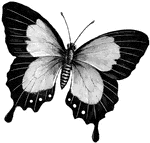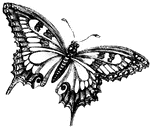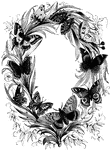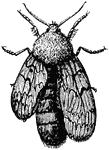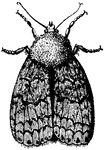
Cecropia Moth
This moth has large wings, measuring five to six inches from tip to tip. It is found all across the…
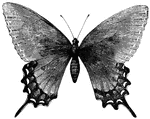
Troilus Butterfly
Butterflies may Usually be distinguished by the vertical position of their wings when they are at rest,…

Berenice Butterfly
Butterflies may usually be distinguished by the vertical position of their wings when they are at rest,…
Monarch Butterfly
The larva of the monarch. This common butterfly is of a brown color, with black veins and wing borders.
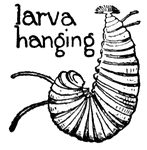
Monarch Butterfly
A hanging larva of the monarch. This common butterfly is of a brown color, with black veins and wing…

Monarch Butterfly
A hanging larva of the monarch. This common butterfly is of a brown color, with black veins and wing…
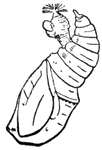
Monarch Butterfly
A hanging larva of the monarch. This common butterfly is of a brown color, with black veins and wing…
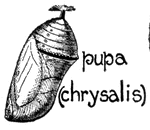
Monarch Butterfly
A pupa of the monarch. This common butterfly is of a brown color, with black veins and wing borders.
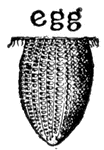
Monarch Butterfly
An egg of the monarch. This common butterfly is of a brown color, with black veins and wing borders.
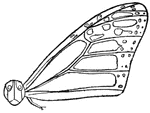
Monarch Butterfly
The mesothorax of the monarch. This common butterfly is of a brown color, with black veins and wing…
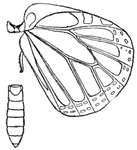
Monarch Butterfly
The metathorax of the monarch. This common butterfly is of a brown color, with black veins and wing…

Monarch Butterfly
The abdomen of the monarch. This common butterfly is of a brown color, with black veins and wing borders.

Cabbage Butterfly
The cabbage butterfly is one of the easiest of the butterflies to capture and rear, (Colton, 1903) This…

Cabbage Butterfly
The cabbage butterfly is one of the easiest of the butterflies to capture and rear, (Colton, 1903) This…

Cabbage Butterfly
The cabbage butterfly is one of the easiest of the butterflies to capture and rear, (Colton, 1903) This…
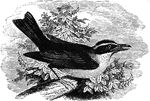
Spoonbill Tyrant Flycatcher
The spoon-bill tyrant fly-catcher has a large, thick bill, which it uses for feeding on butterflies.

Moth
Lepidopterous insects, which are distinguished from butterflies in that the antennae taper to a point…

Morphidae
"The family Morphidae contains the largest and most splendid of the South American butterflies. Their…
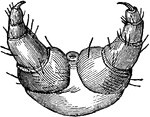
Scaly Legs of the Caterpillar of the Gipsy Moth (Liparis Dispar)
Representation of the scaly legs of the Gipsy moth.
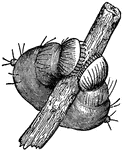
Membranous Legs of a Large Caterpillar Embracing a Twig
Representation of "the two membranous legs of a large caterpillar, of which the hooks of the feet are…
!["Represents the Looper caterpillar, with four membranous legs. If one of these caterpillars, lying quiet at full length, determines to walk, in order to take its first step it begins by humping its back, curving into an arch that part which has no legs, and finishes by [lying flat]"](https://etc.usf.edu/clipart/52200/52217/52217_looper_cater_mth.gif)
Looper Caterpillar
"Represents the Looper caterpillar, with four membranous legs. If one of these caterpillars, lying quiet…
!["Represents the Looper caterpillar, with four membranous legs. If one of these caterpillars, lying quiet at full length, determines to walk, in order to take its first step it begins by humping its back, curving into an arch that part which has no legs, and finishes by [lying flat]"](https://etc.usf.edu/clipart/52200/52221/52221_cater_arch_mth.gif)
Looper Caterpillar Curved into an Arch
"Represents the Looper caterpillar, with four membranous legs. If one of these caterpillars, lying quiet…
Looper Caterpillar at Full Length
"Represents the Looper caterpillar, with four membranous legs. If one of these caterpillars, lying quiet…
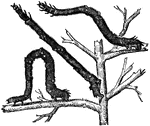
Caterpillar of the Canary-Shouldered Thorn
"Their attitudes deceive even the close observer; they embrace the stem of the leaf or twig with their…
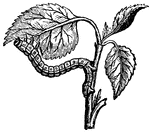
Looper Caterpillar Eating the Leaves of the Apricot (After Reaumur)
"When the caterpillar wants to gnaw the edge of a leaf, it twists its body in such a way that at least…

Caterpillars of the Small Tortoise-shell Butterfly (Vanessa Urticae) Undergoing Their Metamorphoses
"They select some convenient spot, where they hang themselves up, head downward."
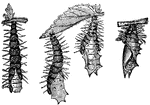
Chrysalides of the Small Tortoise-shell Butterfly Freeing Themselves from the Caterpillar Skin
"To set itself entirely free, the chrysalis alternately lengthens and shortens itself. The old skin…

Chrysalis Divested of the Larva Skin
"Magnified, represents the chrysalis arrived a its final state, and suspended to a branch of a tree…
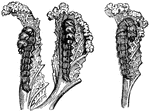
Caterpillars of the Cabbage-Butterfly
"Shows how the head advances over half the circumference of the circle which it has to describe, and…
Pupae of Pieris Brassicae
"Shows the chrysalis in two different positions, and held by the same band which first supported the…
Larvae of Catocala Fraxini
"Among caterpillars that make a very slight cocoon, some gather two or three leaves into a ball, to…

Larva of Acronycta Aceris Taken Out of its Cocoon
This caterpillar uses its own hair to fortify the cocoon. This is a representation of what the caterpillar…

Larva of Chelonia Caja
"The caterpillar of the Tiger-moth, or Woolly-bear, is covered with long, inclined hairs, which it uses…
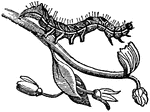
Small Caterpillar of Pimpernel
A specimen of the caterpillar which makes their cocoons of silk with other materials.
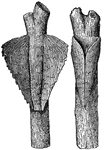
Cocoon of Pyralis Corticalis
"This was the beginning of a cocoon. Each triangular blade was composed of a great number of small,…
!["On the upper part of the [insect's under sides], we perceive various raised portions, formed and arranged like the bands around the heads of mummies."](https://etc.usf.edu/clipart/52200/52278/52278_conical_pupa_mth.gif)
Conical Pupa
"On the upper part of the [insect's under sides], we perceive various raised portions, formed and arranged…

Pupa Having Angular Projections
"A great many others have in the upper part, along the edges which separate the two sides, little humps,…

Angular Pupa of a Butterfly
"The head of the angular pupae terminates sometimes in two angular parts, which diverge from each other…

Chrysalis of the Large Tortoise Shell Butterfly (Vanessa Polychloros)
"A chrysalis seen from its lower side."
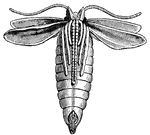
Chrysalis of the Large Tortoise Shell Butterfly (Vanessa Polychloros)
"In this early state one recognizes the head, which is then resting on the thorax; the two eyes and…

Moth Just Emerged
"Represents a moth at the moment in which it has just emerged from the pupa. At the end of a short period…
!["All [butterflies] have four wings, which are covered with scales, that communicate to them the brilliant colors with which they are decorated."](https://etc.usf.edu/clipart/52200/52293/52293_butter_scale_mth.gif)
Different Forms of the Scales of Butterflies, After Reaumur
"All [butterflies] have four wings, which are covered with scales, that communicate to them the brilliant…

